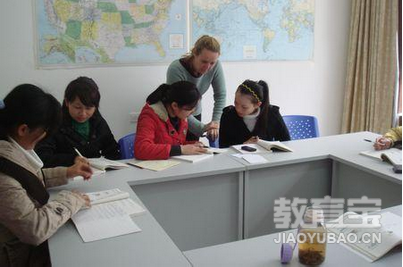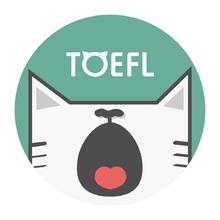 返回
教育头条
返回
教育头条

托福听力TPO5lecture4题目练习分享
托福听力TPO5lecture4题目练习,TPO的内容练习对于大家来说,也是备考练习的重点。那么具体的TPO的练习文本都有哪些?具体的应该如何做好复习备考?为了让大家更充分的备考练习,下面小编为大家整理了详细的内容,供大家参考!
Narrator: Listen to part of a lecture in a literature class. Professor: Now we can't really talk about fairy tales without first talking about folktales because there's a strong connection between these two genres, these two types of stories. In fact, many fairy tales started out as folktales. So, what's a folktale?How would you characterize them? Jeff? Jeff: Well, they are old stories, traditional stories. They were passed down orally within cultures from generation to generation, so they changed a lot over time. I mean, every storyteller, or, maybe every town, might have had a slightly different version of the same folktale.
Professor: That's right. There's local difference. And that's why we say folktales are communal. By communal, we mean they reflect the traits and the concerns of a particular community at a particulartime. So essentially the same tale could be told in different communities, with certain aspects of the tale adapted to fit the specific community. Um, not the plot, the details of what happens in the story would remain constant. That was the thread that held the tale together. But all the other elements, like the location or characters, might be modified for each audience. Okay. So what about fairy tales? They also are found in most cultures, but how are they different from folktales? I guess the first question is: what is a fairy tale? And don’t anyone say “a story with a fairy in it” because we all know that very few fairy tales actually have those tiny magical creatures in them. But, what else can we say about them? Mary.
Mary: Well, they seem to be less realistic than folktales…like they have something improbablehappening - a frog turning into a prince, say. Oh, that's another common element, royalty - a prince or princess. And fairy tales all seem to take place in a location that's nowhere and everywhere at the same time. Professor: What's the line-up? How do all those stories start? Once upon a time, in a faraway land... oh, in the case of folktales, each storyteller would specify a particular location and time, though the time and location would differ for different storytellers. With fairy tales, however, the location is generally unspecified, no matter who the storyteller is. That land far away... We'll come back to this point in a few minutes.
Student: Um... I, I thought that a fairy tale was just a written version of an oral folktale. Professor: Well, not exactly, though that is how many fairy tales developed. For example, in the late 18th century, the Grimm Brothers traveled throughout what's now Germany, recording local folktales. These were eventually published as fairy tales, but not before undergoing a process of evolution. Now, a number of things happen when an oral tale gets written down.

First, the language changes. It becomes more formal, more standard - some might say, "Less colorful". It's like the difference in your language depending on whether you are talking to someone, or writing them a letter. Second, when an orally transmitted story is written down, an authoritative version with a recognized author is created. The communal aspect gets lost. The tale no longer belongs to the community. It belongs to the world, so to speak. Because of this, elements like place and time can no longer be tailored to suit a particular audience. So they become less identifiable, more generalizable to any audience.
On the other hand, descriptions of characters and settings can be developed more completely. In folktales, characters might be identified by a name, but you wouldn't know anything more about them. But in fairy tales, people no longer have to remember plots. They're written down, right? So more energy can be put into other elements of the story like character and setting.
So you get more details about the characters, about where the action takes place, what people's houses were like, ur, whether they're small cabins or grand palaces. And it's worth investing that energy because the story, now in book form, isn't in danger of being lost. Those details won't be forgotten. If a folktale isn't repeated by each generation, it may be lost for all time. But with a fairy tale, it's always there in a book, waiting to be discovered, again and again. Another interesting difference involves the change in audience. Who the stories are meant for? Contrary to what many people believe today, folktales were originally intended for adults, not for children. So, why is it that fairy tales seem targeted toward children nowadays?
以上就是关于“托福听力TPO5lecture4题目练习”的内容,相信大家对接下来的备考内容,有更清晰的了解。考试成绩的高分,并不是一蹴而就的,大家还是需要踏踏实实的练习备考,才能真正的提升我们的分数。
Narrator: Listen to part of a lecture in a literature class. Professor: Now we can't really talk about fairy tales without first talking about folktales because there's a strong connection between these two genres, these two types of stories. In fact, many fairy tales started out as folktales. So, what's a folktale?How would you characterize them? Jeff? Jeff: Well, they are old stories, traditional stories. They were passed down orally within cultures from generation to generation, so they changed a lot over time. I mean, every storyteller, or, maybe every town, might have had a slightly different version of the same folktale.
Professor: That's right. There's local difference. And that's why we say folktales are communal. By communal, we mean they reflect the traits and the concerns of a particular community at a particulartime. So essentially the same tale could be told in different communities, with certain aspects of the tale adapted to fit the specific community. Um, not the plot, the details of what happens in the story would remain constant. That was the thread that held the tale together. But all the other elements, like the location or characters, might be modified for each audience. Okay. So what about fairy tales? They also are found in most cultures, but how are they different from folktales? I guess the first question is: what is a fairy tale? And don’t anyone say “a story with a fairy in it” because we all know that very few fairy tales actually have those tiny magical creatures in them. But, what else can we say about them? Mary.
Mary: Well, they seem to be less realistic than folktales…like they have something improbablehappening - a frog turning into a prince, say. Oh, that's another common element, royalty - a prince or princess. And fairy tales all seem to take place in a location that's nowhere and everywhere at the same time. Professor: What's the line-up? How do all those stories start? Once upon a time, in a faraway land... oh, in the case of folktales, each storyteller would specify a particular location and time, though the time and location would differ for different storytellers. With fairy tales, however, the location is generally unspecified, no matter who the storyteller is. That land far away... We'll come back to this point in a few minutes.
Student: Um... I, I thought that a fairy tale was just a written version of an oral folktale. Professor: Well, not exactly, though that is how many fairy tales developed. For example, in the late 18th century, the Grimm Brothers traveled throughout what's now Germany, recording local folktales. These were eventually published as fairy tales, but not before undergoing a process of evolution. Now, a number of things happen when an oral tale gets written down.

First, the language changes. It becomes more formal, more standard - some might say, "Less colorful". It's like the difference in your language depending on whether you are talking to someone, or writing them a letter. Second, when an orally transmitted story is written down, an authoritative version with a recognized author is created. The communal aspect gets lost. The tale no longer belongs to the community. It belongs to the world, so to speak. Because of this, elements like place and time can no longer be tailored to suit a particular audience. So they become less identifiable, more generalizable to any audience.
On the other hand, descriptions of characters and settings can be developed more completely. In folktales, characters might be identified by a name, but you wouldn't know anything more about them. But in fairy tales, people no longer have to remember plots. They're written down, right? So more energy can be put into other elements of the story like character and setting.
So you get more details about the characters, about where the action takes place, what people's houses were like, ur, whether they're small cabins or grand palaces. And it's worth investing that energy because the story, now in book form, isn't in danger of being lost. Those details won't be forgotten. If a folktale isn't repeated by each generation, it may be lost for all time. But with a fairy tale, it's always there in a book, waiting to be discovered, again and again. Another interesting difference involves the change in audience. Who the stories are meant for? Contrary to what many people believe today, folktales were originally intended for adults, not for children. So, why is it that fairy tales seem targeted toward children nowadays?
以上就是关于“托福听力TPO5lecture4题目练习”的内容,相信大家对接下来的备考内容,有更清晰的了解。考试成绩的高分,并不是一蹴而就的,大家还是需要踏踏实实的练习备考,才能真正的提升我们的分数。
上述就是教育宝头条介绍的托福听力TPO5lecture4题目练习分享完整信息,想要查看更多的托福资讯,敬请关注我的微信18560125702,还可免费获取学习攻略哦!返回教育宝头条
【免责声明】本文仅代表作者本人观点,与教育宝无关。教育宝对文中陈述、观点判断保持中立,不对所包含内容的准确性、可靠性或完整性提供任何保证。请读者仅作参考,特此声明!





